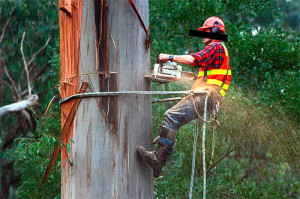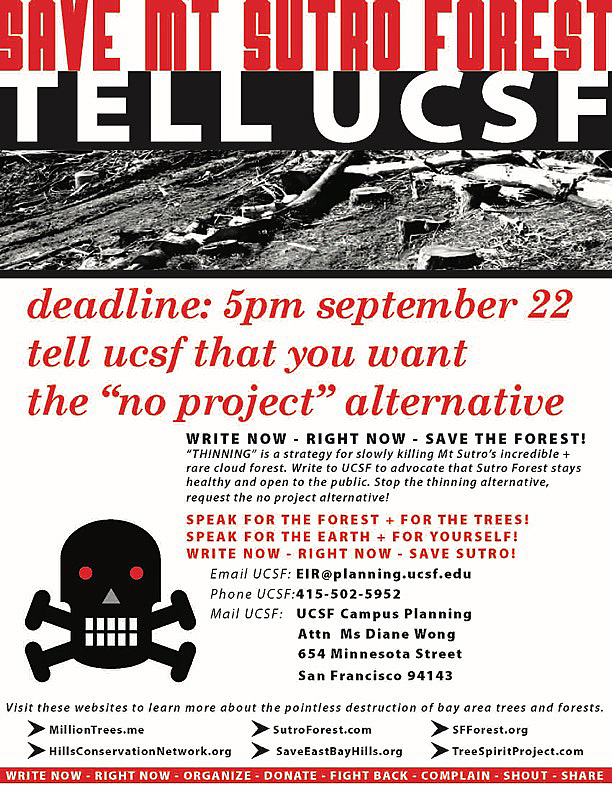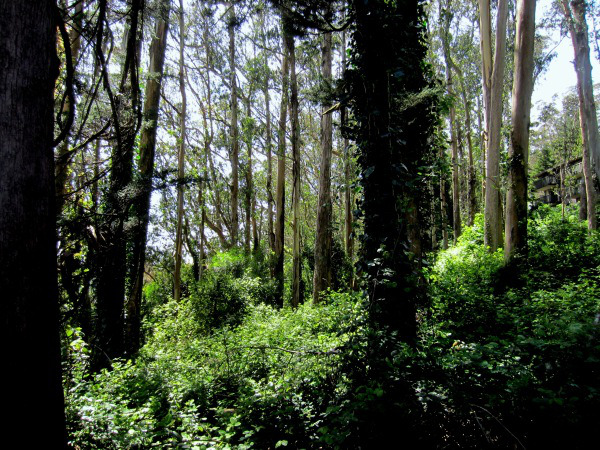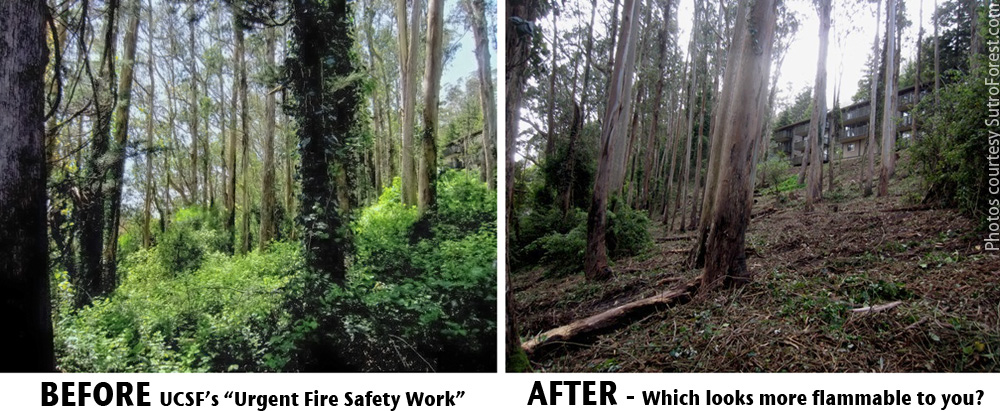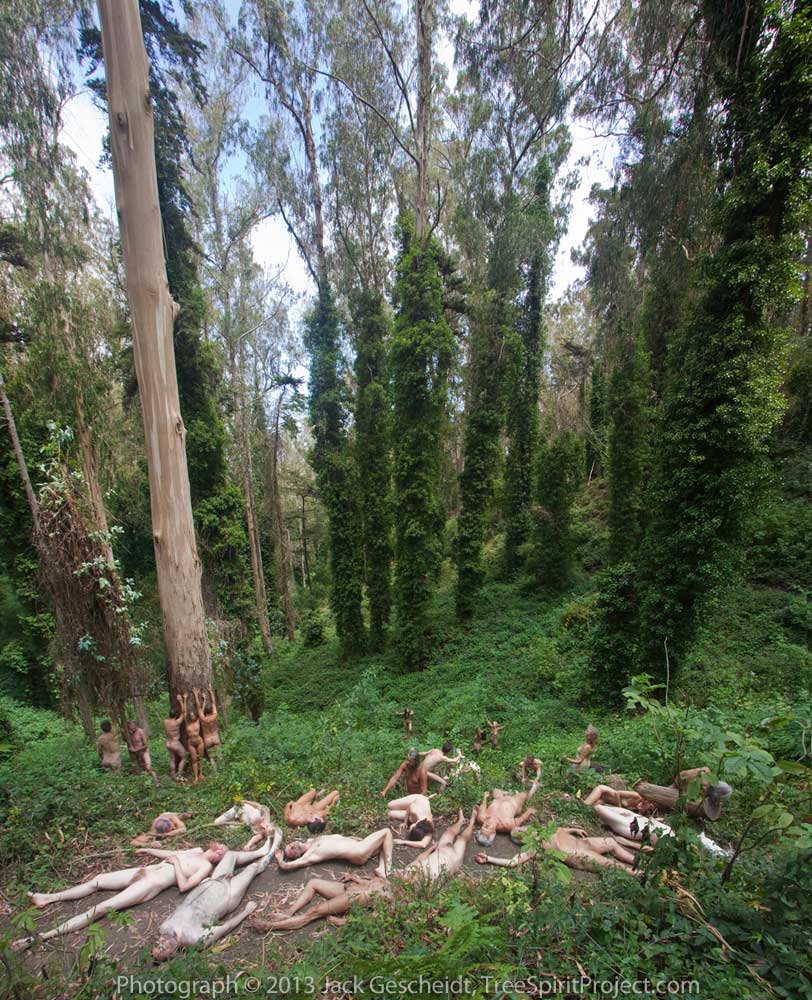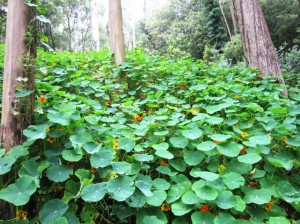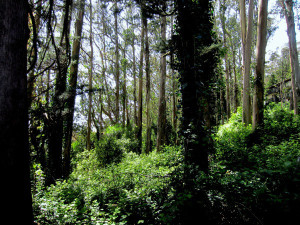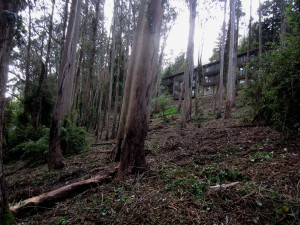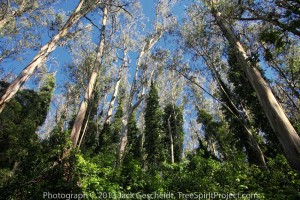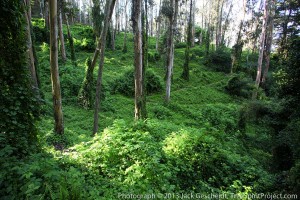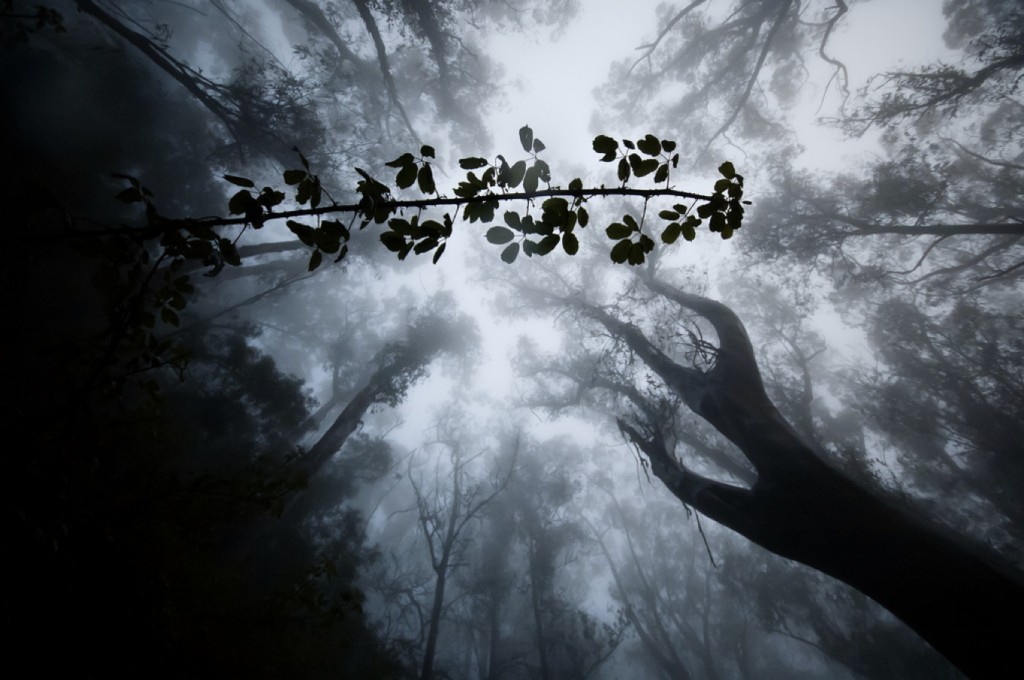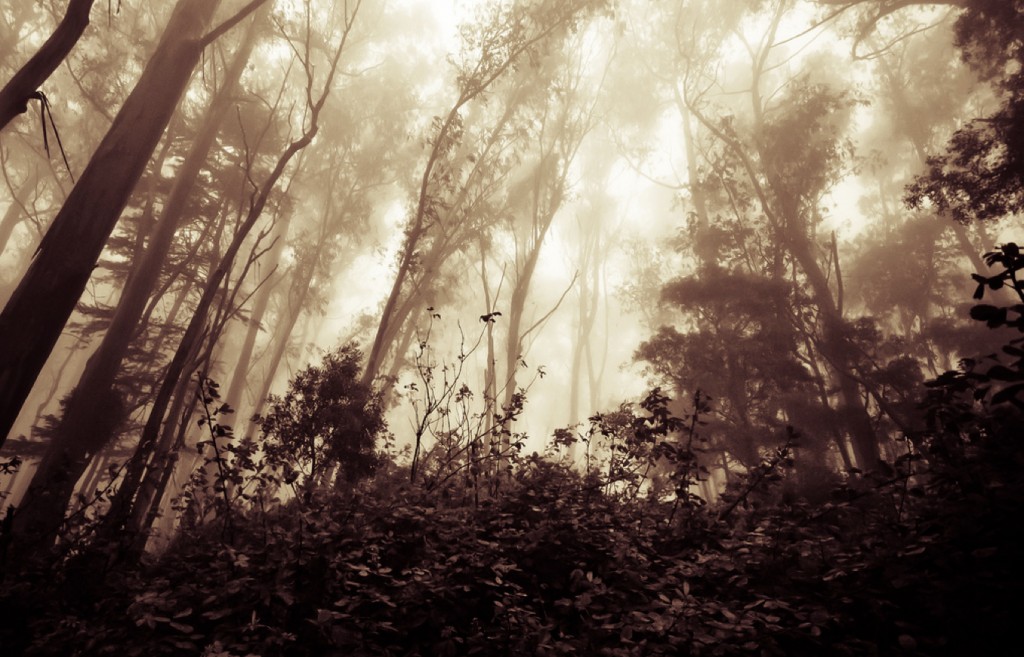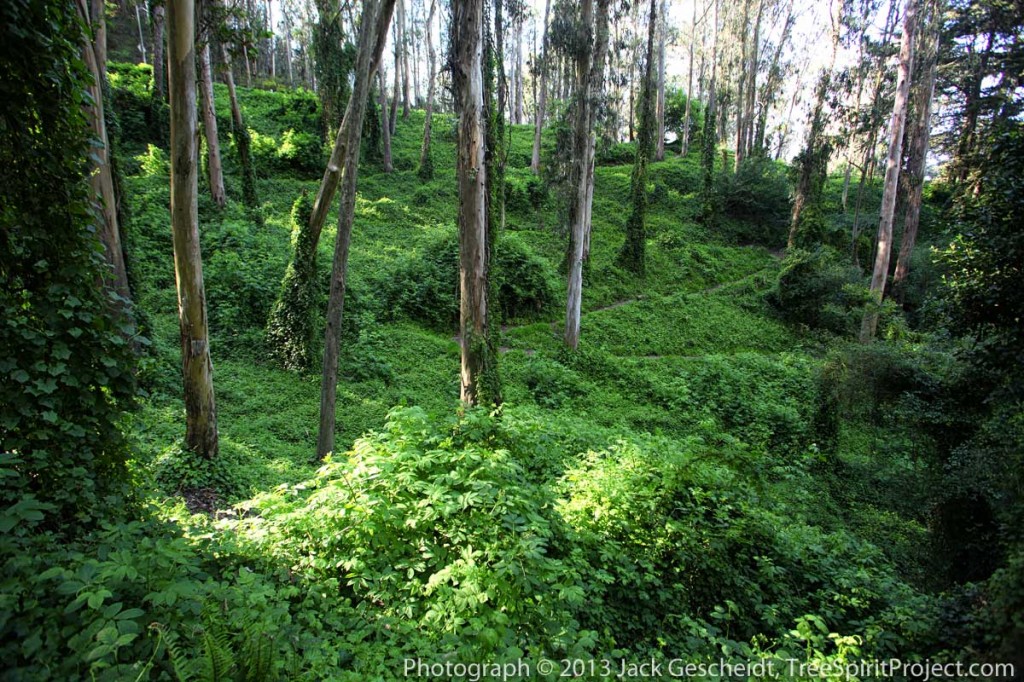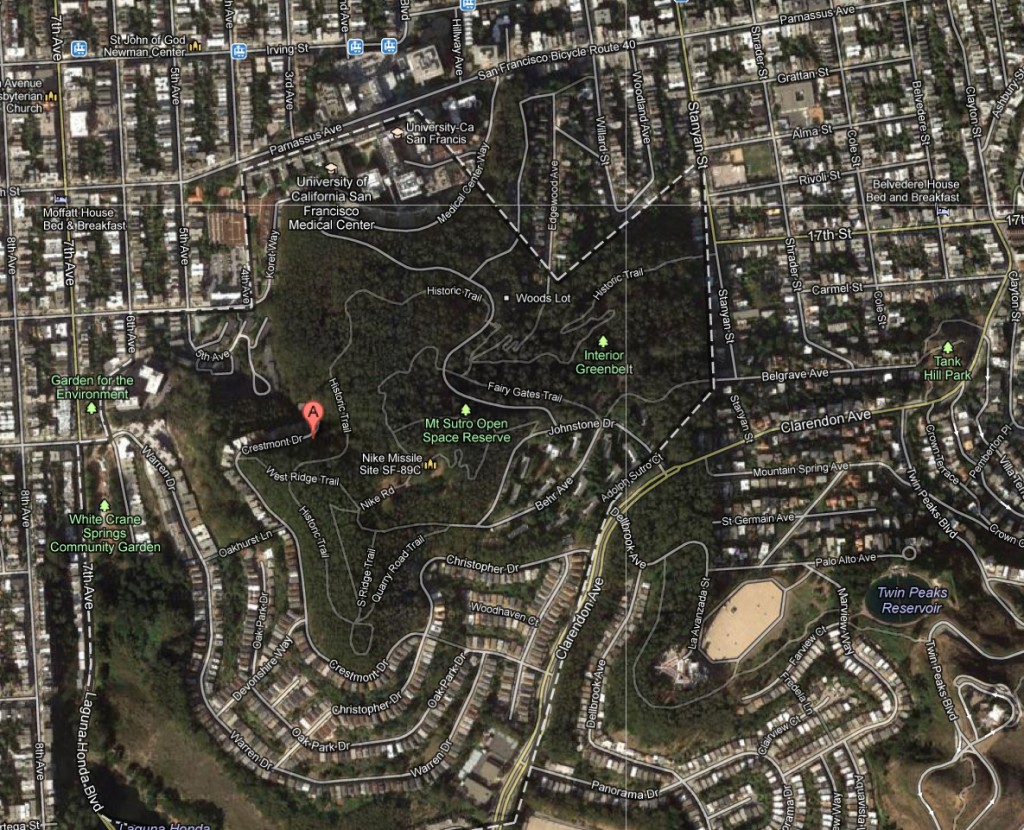“MANAGING” URBAN FORESTS TO DEATH, 2022
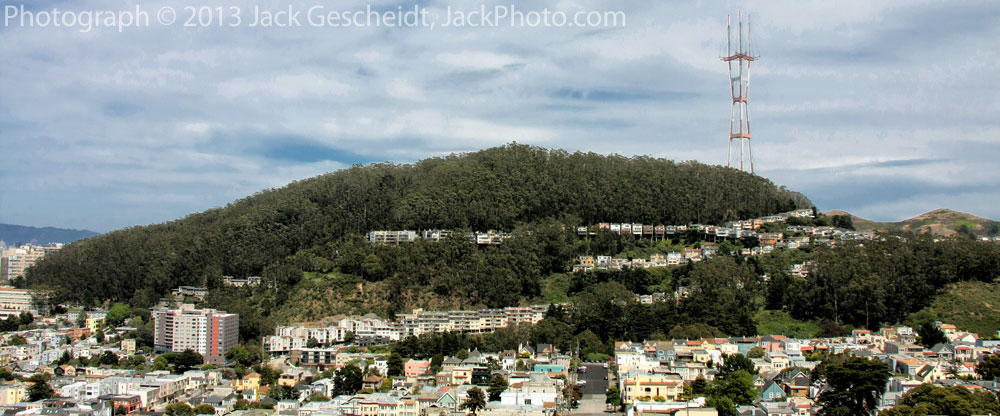
Mt. Sutro Forest in the middle of SF – thousands of tree will be cut down in our era of global warming.
San Franciso’s Sutro Forest, Mt. Davidson forest, Sharp Park forest and others public green spaces are under ongoing assault by the Orwellian-named “Natural Areas Program,” or “NAP,” which has changed its name once again to “Natural Resources Dept.” — it’s harder to debunk a bogus poisoning program if it keeps changing its name.
By any name, NAP bureaucrats, including the many “nativists” among its members and champions, are systematically killing thousands of healthy trees. Their mass tree fellings — which they prefer calling “removals” — no longer just target eucalyptus trees, a favorite tree to hate in California, long a target of “nativist” ire and non-science. Never mind that there are literally millions of eucalyptus trees in California, imported over 150 years ago and now naturalized, part of the intricate web of so-called “native” plant and animal life, and providing all the numerous ecological, atmospheric and climactic benefits that all trees do.
Officials now routinely poison other, smaller plants, too, by spraying hundreds of gallons of carcinogenic herbicides like Dow Garlon and Monsanto Roundup onto them. This toxic chemicals of course drift during application and/or are washed by rain into soil, seasonal streams, and the ecosystem. Thus other plants and animals are poisoned, including birds, raptors, opossums, skunks, foxes, and of course humans who visit these wild-ish urban areas. READ MORE about these poisons.
AUG. 2017 Sutro Forest DESTRUCTION UPDATE:
WHAT YOU CAN DO:
1) CALL & WRITE STATE OFFICIALS. https://sutroforest.com/what-you-can-do Tell them you oppose deforestation — called “thinning” in the latest plan (DEIR) and all chemicals — including Monsanto Roundup and Dow Garlon — routinely used in Sutro Forest and other city parks. Tell them you cherish “wild” urban forests over “managed” gardening projects and don’t want Sutro Forest “managed” — which is (liked “thinned”) a current euphemism for “cut down.”
• LEARN MORE from local community environmentalist website: SutroForest.com
• READ the Draft Environmental Impact Statement detailing the waste of public funds to deforest Mt. Sutro and turn a wild urban forest into a giant gardening project: http://mailchi.mp/cgr/update-ucsf-is-extending-mount-sutro-deir-comment-period?e=8ee553b3b8
• MORE YOU CAN DO: https://sutroforest.com/what-you-can-do
Driving this and countless other assaults on nature is “Invasion Biology”, an ideology which divides wild plants and animals into simplistic, non-scientific categories of “good” and “bad,” “native” and “non-native” and “invasive’ and “non-invasive.” Invasive” is a favorite prejudicial — and it bears repeating, non-scientific — label of the nativist movement now being actively debunked by science. PLEASE READ MORE.
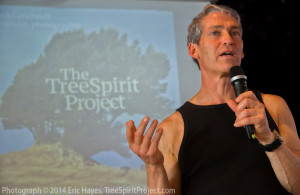 Learn more about all these issues, including eucalyptus trees, herbicides, and Invasion Biology at TreeSpirit Project founder Jack Gescheidt’s next presentation:
Learn more about all these issues, including eucalyptus trees, herbicides, and Invasion Biology at TreeSpirit Project founder Jack Gescheidt’s next presentation:
7pm Friday, Jan. 27, 2017, at Open Secret Community Center, San Rafael, CA: EVENT PAGE
January 2017 UPDATE: Sadly, UCSF continues to defy public opinion and cut down Sutro Forest, a “death by a thousand cuts.” Repeatedly claiming — without scientific studies or substantiation — that more hundreds of trees are 1) “unhealthy;” or 2) “hazardous;” or 3) need to be chainsawed to create “defensible space” to reduce fire risk, their de facto deforestation program continues despite continued public outrage and opposition.
The University continually cuts down dozens, scores and hundreds of trees at a time, which: 1) harms a healthy forest by destroying its fog-collecting, O2-producing, carbon-sequestering, noise-muffling canopy; 2) increasing hazardous landslide conditions by destabilizing soils on steep hillsides by felling trees; 3) making a fire hazard by destroying trees which make shade and prevent the sun from drying out understory brush, a much greater fire danger than fog-capturing forest canopy.
• SIGN THE PETITION to show UCSF just how many people want to preserve Sutro Forest, by ending additional chainsawing, understory destruction and routine herbicide applications: CLICK HERE.
• LEARN MORE, get involved, on this community website: SutroForest.com
In 2013, citizens spoke out and saved 4,000 healthy trees on Sutro. In 2017, we need to speak out again.
Today, when we need more oxygen-producing, carbon-sequestering, shade-producing trees, The University of California at San Francisco (UCSF), planned to chainsaw over 4,000 (more) healthy trees and destroy acres of understory plants in its portion (75%) of The Mt. Sutro Open Space Reserve. (They’ve already cut down over 1,000 trees and significant understory vegetation.)
But thousands of concerned citizens who know the value of trees got involved, spoke up, attended community meetings to point out the short-sightedness of the plans, signed petitions, and more. To their ultimate credit, UCSF listened. As of March 2014, the university suspended plans to cut down more trees, at least for now.
• LEARN MORE, get involved, on this community website: SutroForest.com
• SIGN THE PETITION to show UCSF just how many people want to preserve Sutro Forest, by ending additional chainsawing, understory destruction and routine herbicide applications: CLICK HERE.
UCSF already cut down over 1,000 healthy trees, and destroyed lush understory, claiming — incorrectly — this portion of SF’s fog-soaked Sutro Forest was a “fire hazard.” Just the opposite is true. Lush, foggy forests don’t burn easily, but nearby houses can.
GOOD NEWS: In Nov. 2013, UCSF finally responded to public outrage over their original plan to cut down over 25,000 (!) trees and use toxic, carcinogenetic Monsanto herbicides, including Garlon, to prevent regrowth. They scaled back their original plan, showing they WILL respond to public pressure. Citizens CAN preserve this Open Space… Preserve.
• SIGN PETITION to end the city of San Francisco’s routine spraying of carcinogenic herbicides (including Garlon, Roundup) in SF city parks, including Sutro Forest. CLICK HERE.
• SIGN PETITION to show UCSF how many people want to preserve Sutro Forest from additional tree cutting and understory destruction: CLICK HERE.
• MORE INFO on toxic herbicides used in SF city parks, on SF Forest Alliance website HERE.
• READ FASCINATING ARTICLE describing collision and confusion of two issues: 1) so-called “native” plant “restoration;” and 2) fire suppression practices, at Million Tree.org: http://milliontrees.me/2013/08/06/breakthrough-separating-fuel-management-from-resource-management
• READ OCTOBER 2013 ACCOUNT of how UCSF’s ongoing tree-cutting and understory destruction make Sutro Forest MORE of a fire hazard, not less of one, as UCSF would have you believe. Cutting down healthy, living trees and lush, understory greenery to leave dry brush and wood chips in their place means increased fire danger, not less — fire danger that UCSF uses to justify its deforestation. Confused? Read on…
The public is largely unaware of UCSF’s imminent deforestation plan, even fewer know its massive scope: over 4,000 healthy trees will be cut down — along with acres of understory plants and shrubs that provide shelter and food for birds, Great Horned Owls, foxes, raccoons, squirrels, wood rats, opossums, and even coyote (!), to name just a few of the many animals living in this rare, dense urban forest in the center of SF (see map at bottom of page).
Help preserve this gorgeous, healthy 120-year old, healthy eucalyptus forest for future generations of animals and humans: CLICK HERE.
On July 6, 2013, devoted Sutro Forest friends made a TreeSpirit photograph, “Here To Stay,”(below) to dramatize the vulnerability of this healthy, self-sustaining forest to UCSF’s deforestation plan.
• Support TreeSpirit’s ongoing preservation efforts by purchasing a Fine Art Print of “Here To Stay”
WHY WOULD UCSF CUT DOWN A FOREST?
The University’s P.R. spokespeople say this thriving, lush, fog-soaked forest is 1) “unsafe;” 2) “unhealthy;” and, 3) poses “a fire danger.”
These odd claims are the result of several factors 1) misinformation; 2) exaggeration; 3) political directives from UC brass who for years have tried to cut back the forest, and won’t reveal themselves (lest they be targeted for dismissal by outraged environmentalists); and 4) some well-intended but misguided native plant advocates who lobby for patches of managed, costly-to-maintain “native gardens” over Sutro’s wild forest.
It’s difficult to assess the university’s motives because their “fire danger” claims defy common sense and federal assessments. Perhaps their forest advisers are motivated by hundred-thousand-dollar cutting contracts. Perhaps UC wants to clear land worth millions for future development. Perhaps they just fear wild nature, as some do, preferring “managed,” manicured garden-style forests like nearby Golden Gate Park; Sutro has grown into a rare, wilder, dense urban forest over the last 100 years. Regardless, the university officials driving this persistent effort to cut down thousands of healthy trees by yelling fire remain anonymous. And without transparency there will be little public trust, especially when UC has already cut down over 1,000 trees against community wishes.
UCSF tried once before, in 2009, to cut down much of Sutro Forest by crying “fire danger” — and applied for a FEMA (Federal Emergency Management Agency) grant to do so. The claim was denied by FEMA assessors who declared it a low fire risk. READ ALL ABOUT IT.
The feds confirmed what’s obvious to any visitor to Mt. Sutro’s fog-enshrouded forest: its trees are more fire resistant than the surrounding (dead & dried) wooden housing because it’s canopy, understory and ground is soaked by San Francisco’s famous fog in the summer. Huge quantities of water condense out and drip to the ground and feed a lush, green fire resistant understory vegetation. UCSF wants to tear out this very same vegetation, including ivy and blackberry, thereby drying out the ground, making it more unstable, and destroying precious ground cover for Sutro Forest’s numerous animals.
FELLING OVER 4,000 TREES — a conservative estimate based on UCSF’s newly scaled-back plan shrewdly avoids guaranteeing specific number estimates of trees to cut down. And while it now says it will use other methods (hand pruning, tarp coverings) rather than toxic Monsanto pesticides as originally planned —they won’t rule them out either.
Of course, the forest is so lush, and growing conditions so good, regrowth is inevitable — unless enough trees are removed to allow more sun and dry conditions to prevail. Paradoxically, and counter to common sense, this planned “management” would create the very conditions — drier, more likely to burn — that is its rationale for cutting down thousands of healthy trees in the first place.
COMMON SENSE TEST: Which of the two forests below do YOU think more likely to catch fire?…
UCSF wants you to believe that dense, moist, plants in a fog belt are more likely to catch fire than dried out wood chips left in the wake of chainsaws and chippers. Before and After photos at left, of drastically “thinned” forest, what UCSF plans for additional acres of healthy, environmentally precious forest. (Photos courtesy SutroForest.com)
• LEARN MORE about the fire issue at SutroForest.com.
• LEARN THE BENEFITS OF EUCALYPTUS TREES. The bad rap eucs get from some people is the result of common misconceptions, including some by so-called “native plant” activists, and exaggerations of fire danger repeated so often people believe them. Fear, sadly, is easier to spread than any so-called invasive plant.
• READ San Francisco Chronicle article by Joseph Mascaro, postdoctoral associate, Dept. of Global Ecology, Carnegie Institution for Science.
SIGN THE PETITION to save Sutro Forest. CLICK HERE.
NATIVE vs. NON-NATIVE is a hot topic in the plant world lately, and in play atop Sutro. UCSF’s revised deforestation plan no longer targets so-called “non-native” eucalyptus, Monterey Pine and Monterey Cypress trees in particular. But many local native plant advocates have had UC’s ear, and convinced them to cut into the forest’s large, mature eucalyptus, Monterey Pine, Monterey Cypress, and acacia trees to make way for small “natural areas” demonstration gardens. And at great expense. It makes a great sound bite — “we’re restoring native species!” The reality is a highly debated pseudo-science lacking rigorous scientific definition. For example, when does “non-native” start, exactly? With European settlers, many “nativists” say. But what if the introduced species began on this continent ages ago? Or is contained and can’t spread, as is the case atop Mt. Sutro? Plant (and animal) migrations are natural, and occur without humans. And what about Monterey Pine, considered “non-native” in San Francisco and Marin counties by some nativists, although its “native” range is just down the coast in Monterey, CA. And more: what if a tree gives many more benefits to an area — coastal and hillside stabilization, wind reduction, carbon sequestration, soil filtration, shade, etc. — than the so-called native habitat it replaced? — as do all the ALL aforementioned tree species in Sutro Forest.
Finally, what if, as is the case atop Sutro, this man-made forest grown wild has transformed a grassy hilltop that afforded no wind break, noise suppression or wildlife habitat, into a thriving, self-sustaining, wildlife-rich, cloud forest?
Species migrations occur naturally, long before European settlers brought eucalyptus here, and of course long before humans spread species via shipping. Watch the compelling. informative video of conservation biologist David Theodoropoulos’ talk, below.
San Francisco’s greenery is “non-native” in many areas, some healthy, some not. Nearby Golden Gate Park, e.g., is man-made — it was originally sand dunes — and no one’s advocating its verdant slopes be decimated — i.e., “restored” to its “native” state. (And this leaves aside the reality of the huge impact of us non-native humans).
Native plant restoration can be appropriate in many areas — best when replacing concrete and asphalt (as in San Francisco’s Crissy Field restoration). But not when it means killing tens of thousands of healthy, mature trees which provide far more environmental benefits than a so-called restoration would provide. And of course some native plant advocates wisely evaluate projects on a case-by-case rather than a native-is-always-better basis.
WATCH thought-provoking “native vs. non-native” talk by conservation biologist David Theodoropoulus @ the Public Interest Environmental Law Conference, Eugene, OR, March 5th, 2011:
Why would UCSF spend hundreds of thousands of its dollars (or seek federal funds) to “restore native plants” on the hillside adjacent to its campus?” Why spend hundreds of thousands, even over $1,000,000, on deforestation when UC budgets are already strained? Is it cynical or realistic to note that Mt. Sutro is the only relatively inexpensive place for future UCSF expansion? UCSF’s public relations staff denies these assertions of course, but also denied any tree-cutting would be done without public approval — and has proceeded with cuts anyway, claiming “safety hazards” and “imminent fire hazards.” What does your common sense tell you? We’re not conspiracy theorists here at TreeSpirit, and we value universities, and we value UCSF. But we also value logic, common sense, honesty and transparency, especially when it comes to taxpapyer dollars and preserving desperately needed trees and urban green space.
READ thoughtful “Tree Wars” Bay Times ARTICLE by Joel Engardio.
As if this all weren’t environmentally destructive enough, carcinogenic PESTICIDES are part of UCSF’s “restoration” plan. Those mentioned in the EIR are glyphosphate, triclopyr, and imazapyr. They say they’re safe — and we say they’re toxic. None are currently used in Sutro’s dense, healthy forest. Even in environmentally-aware 2013 San Francisco, these deadly poisons are still routinely used in the Native Areas Program (NAP) which leads the effort to restore native plants — even when this requires chainsawing tens of thousands of mature, healthy, oxygen-producing trees. Trace amounts of pesticides and herbicides of course find their way into groundwater, animals and humans. This routine, poisonous practice alone belies the wisdom of UCSF’s plans for Mt. Sutro.
HEALTHY, MATURE Sutro Forest offers a tremendous benefit to the surrounding area, including as a wind break and city noise absorber. Visit this beautiful, lush forest and imagine its verdant hills barren of thousands of its trees and lush understory canopy.
With little human interference or “management,” tens of thousands of eucalypts — along with numerous other species of trees and shrubs — have created a unique, relatively wild habitat for numerous animal and (over 90) bird species, rare within a city. See for yourself: Treat yourself, friends and family to a visit into this retreat for harried urban humans. If you like — or love! — what you see, hear, and smell, get involved to save this living treasure (see below).
• READ concise SF BAY GUARDIAN article with savvy speculation on UCSF’s mysterious motives.
• READ San Francisco Chronicle article, 3.1.13, on the controversy.
• READ PLANS TO CUT DOWN 500,000 HEALTHY BAY AREA TREES (yes, you read that number correctly, over 1/2-million) on the San Francisco Forest Alliance and MillionTrees.me websites.
• SIGN THE PETITION to save Sutro Forest. CLICK HERE.
(Over 3,800 have signed as of Nov. 20, 2013.)
WANT TO FIND THE TRUTH? FOLLOW THE MONEY…
…to one plausible motivation behind UCSF’s massive clear cutting plans.
Mt. Sutro is worth millions of dollars to UCSF as the easiest, cheapest place left to expand its campus. Of course they haven’t — and won’t — state this publicly. Imagine the public relations, uh, firestorm, if UC’s Board of Regents reneged on their 1976 promise to maintain Sutro Forest as a permanent Open Space Reserve (its official designation).
Why else would UCSF spend hundreds of thousands of dollars to cut down so much forest which FEMA says poses no significant fire risk?
WHAT YOU CAN DO:
• LEARN MORE about UCSF’s environmentally disastrous plans: http://sfforest.net/2013/02/04/ucsf-plans-to-fell-30000-trees-in-mount-sutro-forest
• SIGN PETITION to save Sutro Forest (takes 30 sec.): HERE. (Over 3,800 have signed as of Nov. 20, 2013.)
• CALL/WRITE OFFICIALS on this community website: http://www.SutroForest.com
Fine Art Cloud Forest Photographs above courtesy of Paul Hudson.
This rare, urban forest ecosystem can be saved for its countless benefits, including clean air and wild places for our children — and their children. But only f we citizens speak up and act. As the bumpersticker says, “If the people lead, the leaders will follow.”
Important to note: this kind of small forest destruction — or its preservation if we citizens get involved — is happening all over the country, and the world. Each may seem minor in acreage, but collectively forests and greenspace are vitally important for humans and myriad other animal species. We can destroy what remains of the forests of America — or act to save them. As the saying reminds us, “Think globally, act locally…”
Finally, putting activism aside, we encourage you to treat yourself and your friends and family to a visit to Sutro Forest. Bring a picnic lunch, breathe the fresh forest air, take a break from the faster-paced city life below. Enjoy, feel, smell, listen, touch, see — and decide for yourself. Which Mt. Sutro habitat do you think most benefits UC students and the people of San Francisco?

